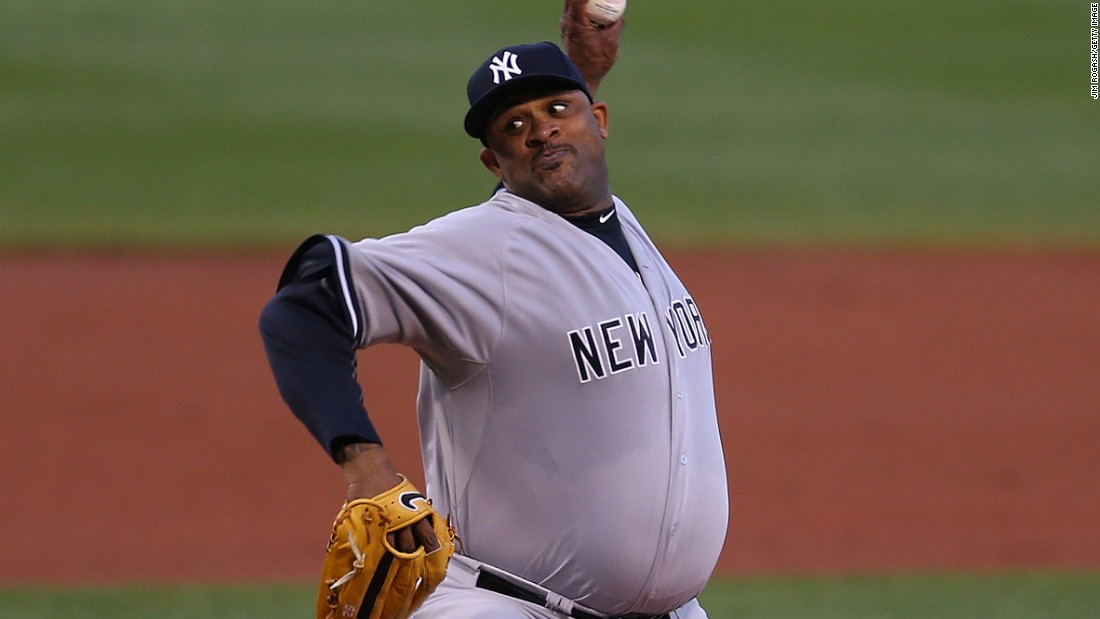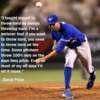I know this deals with many factors but how does running velo correlate to mound velo or if it doesn't at all??
Replies sorted oldest to newest
I would think there would be a little correlation because you need leg strength to drive and to run. But I think it would be spotty at best. Let's put it this way if you are slow I wouldn't panic about it when it comes to being a good pitcher.

Ballplayer, maybe you can clarify, but I'm thinking you're talking about throwing with a crow-hop vs. throwing off the mound. In other words, say, throwing from the outfield vs. throwing off the mound. I think it really depends. Some kids can throw harder with a running start, some can throw harder off the mound. It depends on mechanics. My son played SS and could always throw harder off the mound than from SS with a running start or crow hop. Some kids throw harder from their position than from the mound.
Running velo or "run and guns" are meant to teach intent to throw hard and train your body to throw with max effort. As I understand one particular arm care overload/underload program, the run and gun with a 3oz. ball is an indicator of max potential velocity.
I've wondered about this as well. My son did an 8 week Velo program and they were always timed using the running method. His velo went up each time, so there was obvious improvement, but I don't know if his results are really an indicator of what he would throw off the mound.
I have this question as well. I guess the "run and gun" is the same as "pull down", which is to throw the ball as hard as you can from a running start. From my observation and intuition, the pulldown velos are faster than mound velos even with the same weight ball, but I don't know by how much? Is it by a fixed number of mph, or by a ratio (e.g. something like "pulldown is 110% of mound velo")?
I think a VERY general rule of thumb would be -3 or -4. That is just empirically speaking based on what I've seen as my son and several of the Ps he trains the last few years. His trainers (top notch and well known) have said -3 is typical. To be clear, that would mean if a player maxed on "turn and burn" (their phrase, others say "run and gun") at 90, he'd likely max out on a mound at 86/87. I will say that my son's delta is less than typical. He's had weeks where he maxed out on the mound at or just 1 tick below where he maxed on turn and burn that same week. His instructors who have trained 100s of pitchers said, "-3 is typical/average but we have some who - have less and some who see more of a drop." I have had this same discussion with a close friend who has a LHP son who is also headed D1, and we agreed on the -3, or perhaps visualize a fairly steep bell curve with -3 in at the mid point. I may be wrong/small sample size, but that is what I have to offer.
I looked up the top 10 HS prospects on PG website. For those who had both listed, it varied from -1 to -8. The guys with the biggest differences were listed as primary position guys.
PG does not list max velo from "run and gun" or "turn and burn". They list max velo from mound only, and only those from their tournament games or showcases that they themselves have witnessed and verified. OP was asking about something different.
Edit: sorry, I think I get your point. You looked at OF velo as substitute for run and gun. Makes sense and a reasonable data point.
If you blend it correctly the difference should be minimal. It depends on how good you are at throwing a baseball. The vast majority of pitchers who grow up pitching and not playing a position are pretty poor at throwing a ball, so developing throwing mechanics and intent in throwing will show immediate benefits. An outfielder/shortstop who naturally throws the ball well and also pitches won't see much benefit from most programs that develop throwing velocity only.
Chaining throwing velocity to the mound is vital and a missing component in most programs for velocity.
That's a long way to say "Well, it depends on what program you're on and what position you play and other factors." One of our guys threw a baseball 107.9 MPH (which is potentially the hardest anyone has ever thrown a baseball). He sits 95-97 MPH on the mound but has touched 100-101 as well. Yet we have people who throw 97-100 MPH and sit 95-97 MPH on the mound too. Just depends.
Anecdotaly, my son is listed on PG as throwing 82 from SS and 87 from the mound. For some reason, he always threw harder from the mound than from his position. I think Kyle is right. It depends on the player.
If I can add anything to Kyle's insight it would be the emphasis on intent. If you've follow Kyle's stuff you immediately notice his guys try to throw the ball hard, and I mean really try. Run and gun throws do a great job of training this. Every velocity record that is broken at his facility is wildly celebrated among his clients. With this type of environment and culture it is easy to see why his guys have seen such great velocity improvements.
I think the run and gun stuff can give an unfair representative of velocity programs that implement this tool. All guys want to do is run and gun and see how high they can get the radar gun up to. This, of course, is the fun part. What is missed too often is the part that may not be quite as fun for some: the meticulous study of mechanics, the hours put into the weight room lifting weights, and the hours spent on recovery methods.
Not sure I understand the original question. But the fastest runners (like 60 yd times) means very little in their throwing velocity. Some of the best arms we see don't run well. Some of the fastest runners we see don't throw well. And sometimes a player has both tools. And sometimes neither tool.
Now I can see how someone with a good arm can improve velocity by working on running faster. I can't see how someone that can run fast will get any faster by working on throwing harder.
Austin Womack posted:If I can add anything to Kyle's insight it would be the emphasis on intent. If you've follow Kyle's stuff you immediately notice his guys try to throw the ball hard, and I mean really try. Run and gun throws do a great job of training this. Every velocity record that is broken at his facility is wildly celebrated among his clients. With this type of environment and culture it is easy to see why his guys have seen such great velocity improvements.
I think the run and gun stuff can give an unfair representative of velocity programs that implement this tool. All guys want to do is run and gun and see how high they can get the radar gun up to. This, of course, is the fun part. What is missed too often is the part that may not be quite as fun for some: the meticulous study of mechanics, the hours put into the weight room lifting weights, and the hours spent on recovery methods.
Attachments
I was about to recommend drivelinebaseball.com but then I noticed the owner, Kyle, responded!

